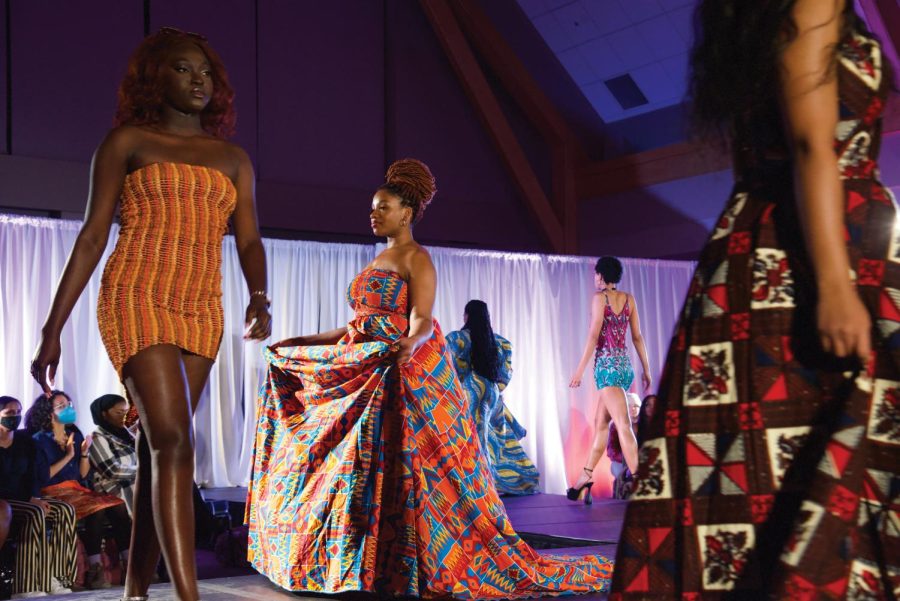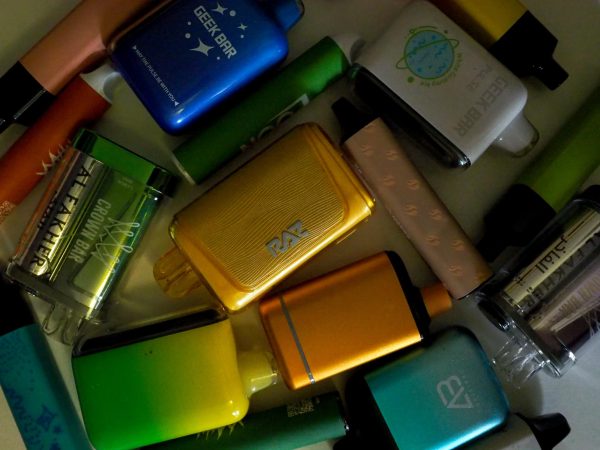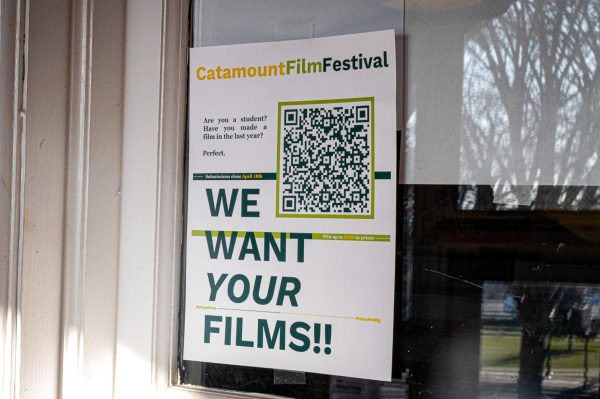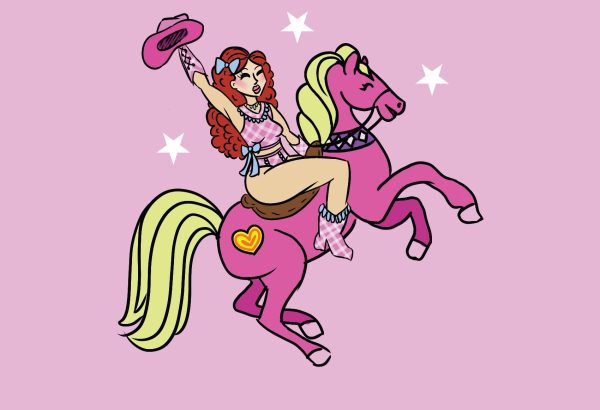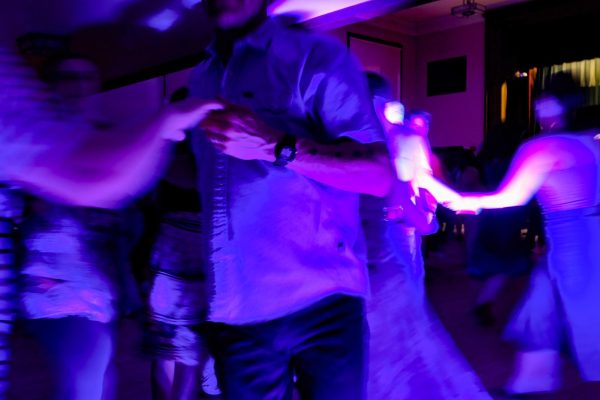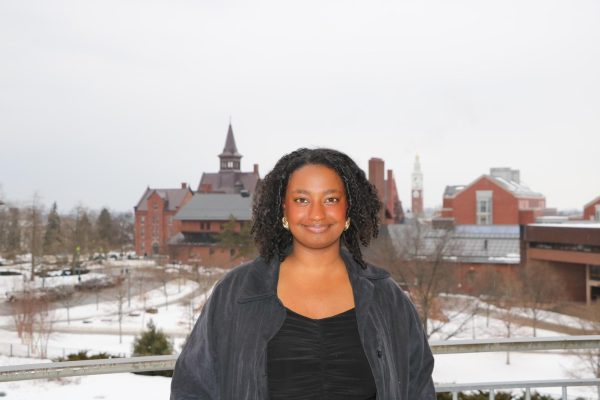“Living in Color:” UVM’s Black Student Union takes to the runway
Students walk the runway at the Black Student Union’s fashion show “Living in Color” in the Grand Maple Ballroom Feb. 25. The name is reflective of Black artists in the fashion industry as well as the active experience of being a person of color.
Editor’s note: Eamon Dunn is the culture editor of the Cynic. Miles McCallum is the historian of the Black Student Union. With the Cynic being a predominantly white newsroom, McCallum was invited to co-author this piece in an effort to grant BSU more autonomy over the portrayal of its members.
After a long Saturday of running multiple dress rehearsals, flying designers to Burlington, styling models and preparing the Grand Maple Ballroom, the night begins. Crowds from across UVM’s campus, the Burlington area and the entire state begin to pour into the Davis Center for the culmination of the Black Student Union’s Black History Month festivities: the BSU Fashion Show.
Since its inception in the late-2000s, BSU has hosted its Fashion Show at the end of every February and eventually established the Davis Center’s Grand Maple Ballroom as its regular location. This year’s show, held Feb. 25, featured seven scenes, five designers, two musical performances and two dance performances.
To put on the three-hour event, which involves coordinating designers, musicians and entertainers from both in and out of state, is no easy task. Fashion Show is an event that requires multiple months of planning, communication and creativity from the BSU, but pays off in a night unlike any other.
Preparing for the Show

On Feb. 19, the undergraduate models in Fashion Show gathered for one of their final rehearsals before the weekend of the show. Students at the rehearsal—some in high heels several inches tall—practiced their walk on a variety of paths around a taped outline of a catwalk.
Putting together the show is a long process. In November, BSU communicates with potential designers to coordinate who’s designs will be featured in the show. Details around the theme of the show, reserving rehearsal space and selecting the walking coaches are determined in December. In the last week of January, BSU holds auditions for students interested in modeling.
BSU Secretary and junior McKayla Muschette, a model in the show for the past two years, sees the work it takes from both the BSU executive board and the undergraduate models to make Fashion Show a success.
“Putting on the show takes a lot of work, and from the e-board perspective, it takes lots of organizing and planning so that everything comes together,” Muschette said. “With lots of moving pieces and things beyond our control, there’s a lot to do to make sure things run smoothly.”
As the models rehearsed on the practice runway, the group provided feedback to one another, pointing out where their fellow models struggled with spacing. They also critiqued the timing of the various moves performed for the faux audience, from blown kisses to crowd-energizing hand waves.
“[The group feedback] is coming from a place of trying to have the show come out as [polished] as possible,” said junior Jaya Touma-Shoatz, a new model in the show this year.
The process for fashion show models is a lot of work, and the critiques given to each other are important, Touma-Shoatz said.
Before joining BSU, Touma-Shoatz had a hard time finding community and was feeling really isolated, they said. Coming from a high school in Philadelphia where the student body was almost entirely made up of Black students, transitioning to UVM was stressful.
“Going to BSU events felt like a stress reliever in a lot of ways,” they said. “Given the importance of community and gathering in Black culture and the general lack of those sorts of events at UVM, the events that BSU puts on are really impactful.”
The BSU Fashion Show took root in the mid-2000s. The event began as a way to build community and raise money for charity, particularly in wake of Hurricane Katrina.
Fashion Show began with Black students simply showing off their own outfits for fellow BIPOC undergraduates, before eventually evolving into the fashion show of today with designers and their clothes being flown in from out of state, and the event drawing crowds from all across Vermont.
“Living in Color:” The Night of the Show
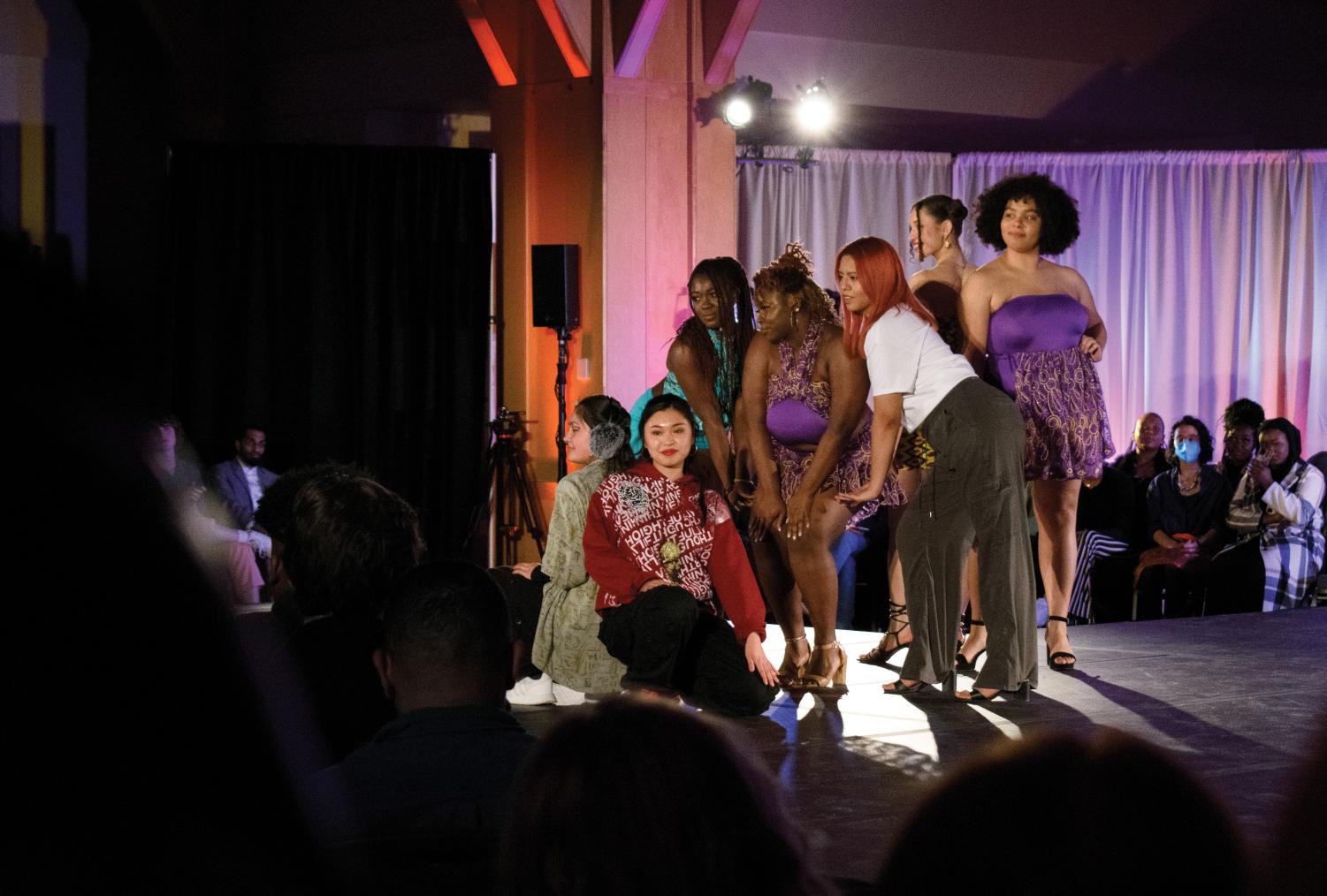
The night itself began with remarks from BSU President Ayden Carpenter, a sophomore, thanking the audience and centering community as the heart of Fashion Show.
In the crowd of over-400 were members of the UVM administration, staff from the Mosaic Center for Students of Color and Black alums who had participated in past Fashion Shows.
“Sometimes, you really forget that all the work you put in for these big events—it builds community amongst everyone,” Carpenter said. “There’s so many students here, so much staff, so many people from Burlington and Vermont—it’s nice.”
The seven scenes of the show alternated between streetwear and afro print designs, featuring designers from across the Northeast and East Coast.
“Something that has always been a part of our culture is color, being bold and loud, with intricate colors and patterns,” said BSU Treasurer Wayne Peterkin Jr, a junior. “Even in streetwear, the graphics are made to stand out from the rest, with pieces and accessories that complement that idea.”
With each scene, the audience exploded into cheers and applause, as friends and peers took the runway, showing off a month’s worth of rigorous rehearsal.
Punctuating the night were performances from two local student-run dance groups, The Elites and UVM Afrofusion. UVM Afrofusion took the stage halfway through the night, showcasing their unique blend of both traditional dance and contemporary styles while The Elites, founded by juniors Christel Tonoki and Bety Mayani, closed out the show with a dazzling multi-part performance.
After The Elites’ performance, the BSU executive board took the stage for a final bow and thanked the audience—another Fashion Show complete.
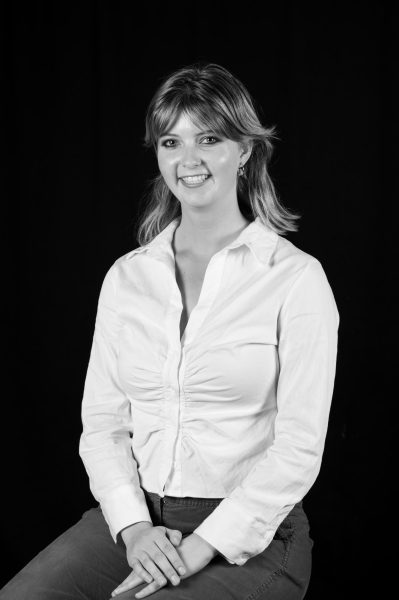
(She/her)
Sophia Balunek is a senior majoring in Geography with a minor in Wildlife Biology from Cleveland, Ohio. She joined the Cynic her first-year...


